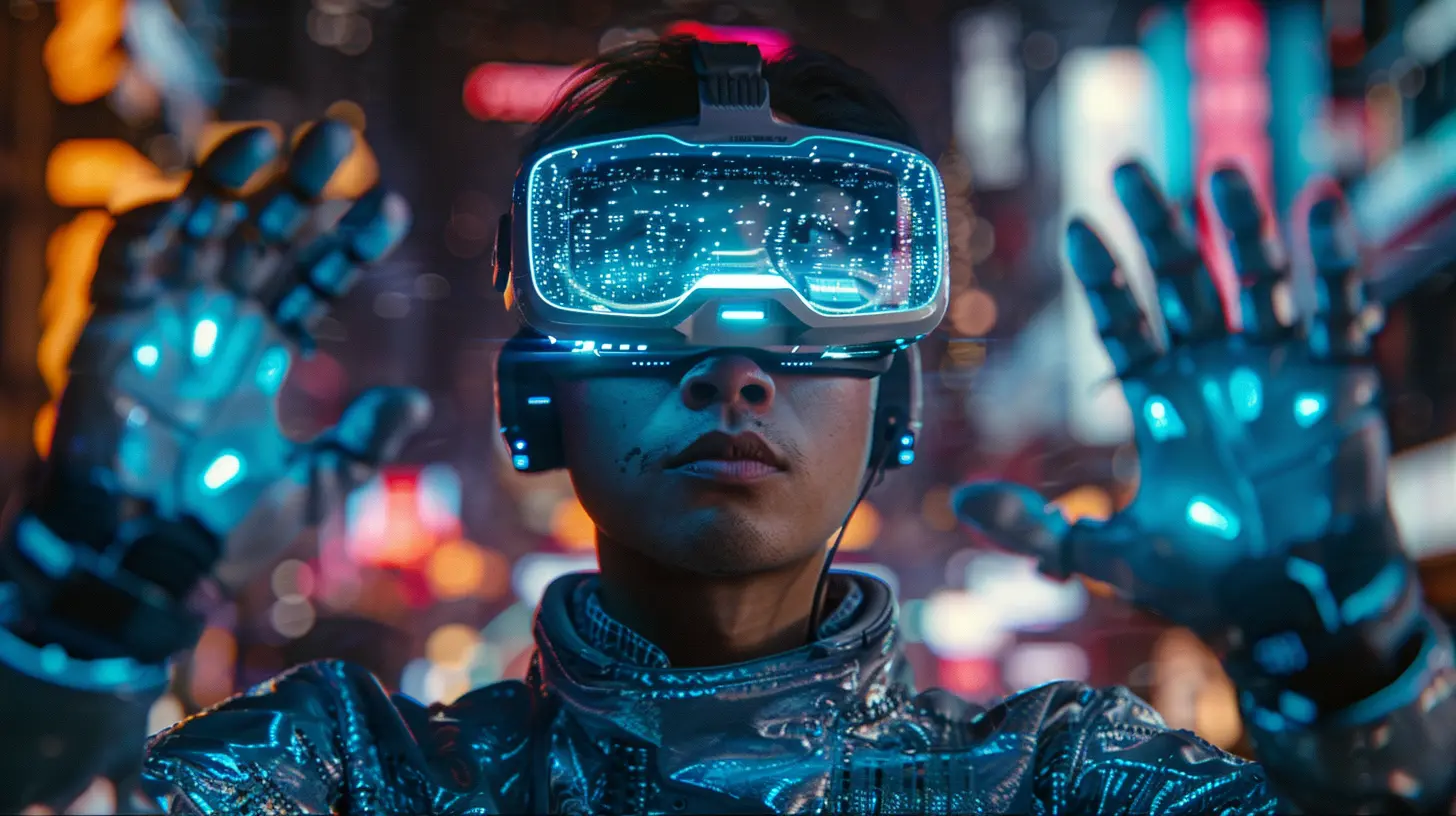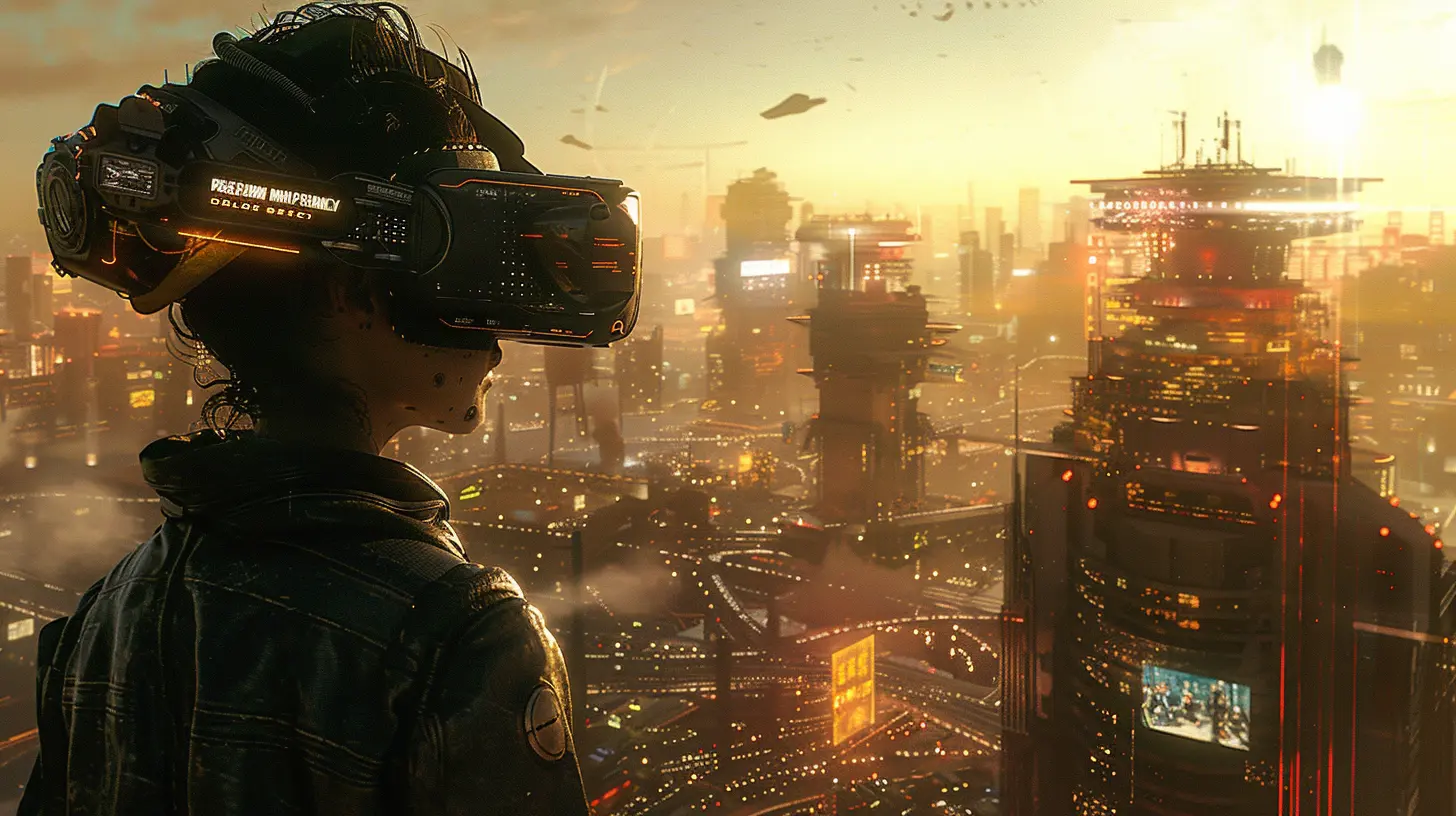The Intersection of VR Gaming and Augmented Reality
24 May 2025
Virtual Reality (VR) and Augmented Reality (AR) have been buzzwords in the tech world for quite some time now. But have you ever thought about what happens when these two groundbreaking technologies meet? If you’re a gaming enthusiast, you might already have some wild ideas brewing. The intersection of VR gaming and AR isn’t just nerdy sci-fi anymore—it’s the future. And believe me, it’s closer than you think.
In this article, we’ll dive deep into how VR and AR are colliding in the gaming space, how this mashup is changing the way we play, and what it could mean for developers and gamers alike. So, grab your controller (or headset) and let’s get started.
What is the Difference Between VR and AR?
Before we hop into the nitty-gritty of their intersection, it’s important to understand the unique strengths of each technology. Think of VR and AR like two sides of a coin—both shiny, but each offering something different.- Virtual Reality (VR): This is the fully immersive side of gaming. With a VR headset strapped on, you’re transported to entirely new worlds. Whether you’re fighting off space invaders or casting spells as a wizard, VR makes it feel like you’re in the game.
- Augmented Reality (AR): Instead of taking you to another world, AR brings the game to your world. Using glasses, smartphones, or AR headsets like the HoloLens, you can see digital objects layered over your real environment. Remember "Pokémon GO"? Yep, that’s AR in action.
Each offers something unique. VR is like jumping headfirst into a swimming pool, while AR is more like dipping your toes into a stream. Both are cool, but together? They’re next-level.
The Fusion of VR and AR: Mixed Reality is Here
When VR and AR meet, they form what’s called Mixed Reality (MR). Think of MR as the perfect middle ground. It takes the best parts of both technologies and smashes them together into one seamless experience. For example, imagine wearing a headset that lets you slay zombies in your living room while still being able to see where your coffee table is. Sounds wild, right?Companies like Microsoft and Meta are already diving headfirst into this space. With innovations like the Meta Quest Pro and Microsoft HoloLens, developers are beginning to blur the lines between virtual worlds and physical spaces. And it’s not just sci-fi—MR is becoming a practical gaming reality.
Why is the Intersection of VR Gaming and AR So Exciting?
Alright, so why should you care about this killer combo? Simply put, VR and AR together can do things that neither can do on their own. Let’s break it down.1. Unparalleled Immersion
Imagine playing a fantasy RPG where the dragons feel like they’re flying around your room, but when you put on your headset, you’re transported straight into their lair. That’s the kind of immersion we’re talking about. Combining VR’s depth with AR’s real-world interaction makes gaming feel more real than ever.2. Social Gaming on Steroids
Let’s face it, traditional VR can feel isolating. You strap on a headset, and boom—you're cut off from the world. But AR and MR allow for shared experiences. Picture playing a co-op game where one player uses VR to explore a dungeon while the other uses AR to act as their guide, spotting traps with their smartphone. Mind-blowing, right?3. More Accessibility
Not everyone wants to don a fully immersive headset. AR allows for a more casual gaming experience while still offering the benefits of an interactive virtual layer. Combining this with VR ensures that everyone—from hardcore gamers to casual players—gets a slice of the pie.4. New Game Genres
When VR and AR collide, the door opens for entirely new types of games. We’re talking about genres we haven’t even dreamed of yet. From location-based games that mix VR missions with AR navigation to real-world scavenger hunts that double as fully immersive adventures. The possibilities? Practically endless.
What Does This Mean for Game Developers?
Alright, developers, this one’s for you. The intersection of VR and AR isn’t just a playground for gamers; it’s also a goldmine for innovation. Sure, it’s challenging to develop for these technologies, but the potential rewards are huge.1. New Storytelling Opportunities
Mixed Reality lets you tell stories in a way that’s never been done before. Developers can create games that interact with the player’s actual environment, breaking the fourth wall and redefining what it means to be “in” a game.2. Emerging Tools and Platforms
Platforms like Unity and Unreal Engine are already investing heavily in VR and AR support. And companies like Apple and Google are developing AR-centric kits (ARKit and ARCore, respectively). These tools make it easier than ever for developers to jump into the mixed-reality space.3. Massive Market Potential
Let’s talk numbers for a sec. The VR and AR gaming markets are expected to grow exponentially in the next few years. Developers who embrace this intersection early are setting themselves up to ride this wave of growth. Plus, you’ll get bragging rights for being a pioneer—who doesn’t want that?Challenges on the Horizon
Let’s not get too ahead of ourselves, though. While the intersection of VR gaming and AR is super exciting, it’s not without its challenges. Here are a few hurdles standing in the way:1. High Development Costs: Creating games that utilize both AR and VR technologies requires advanced equipment, software, and expertise. It’s not exactly cheap.
2. Hardware Limitations: We’re still waiting for headsets that seamlessly blend VR and AR without clunky designs or sky-high price tags. Current hardware, while impressive, has a long way to go.
3. Motion Sickness Issues: Let’s be real—motion sickness is still a problem in VR gaming. Throw AR into the mix, and you’ve added another layer of complexity. No one wants to projectile vomit while fighting digital zombies.
4. Content Overload: Developers need to strike a balance. Too much AR or VR content at once can overwhelm players rather than immerse them. It’s a fine line, and not everyone gets it right.
The Future of Gaming is Hybrid
So, what does the future look like? Well, if VR and AR’s intersection is anything to go by, the future is bright—and also a little trippy. Imagine gaming experiences where you’re not just playing “in” a world, but interacting with it on multiple levels—in both virtual and physical spaces.As the technology matures, we can expect more seamless MR experiences. Headsets will become lighter, games will become more intuitive, and the barriers between reality and the virtual will continue to blur. For gamers and developers alike, it’s an exciting (and slightly surreal) time to be alive.
Final Thoughts
The intersection of VR gaming and augmented reality is more than just a techie buzzphrase—it’s a game-changer. Whether you’re a casual gamer or a full-blown VR nerd, this fusion offers something for everyone. The possibilities are endless, the potential is huge, and the future? Well, it’s looking more immersive than ever.The only question left is, are you ready to strap in?
all images in this post were generated using AI tools
Category:
Virtual RealityAuthor:

Whitman Adams
Discussion
rate this article
3 comments
Nyxaris Bishop
Great article! The fusion of VR and AR is truly reshaping the gaming landscape, opening up new realms of creativity and immersion. It's exciting to see how these technologies can create unique experiences that engage players in innovative ways. Looking forward to what the future holds for this dynamic intersection!
June 12, 2025 at 5:00 AM

Whitman Adams
Thank you! I'm glad you enjoyed the article. The possibilities with VR and AR are indeed thrilling, and it's exciting to imagine where these innovations will take us in gaming!
Raina Reyes
Ah, VR and AR finally together like peanut butter and jelly! Just imagine dodging virtual zombies while accidentally stepping on the cat. It’s the perfect blend of gaming and chaos—who needs real-life balance when you can have epic battles in your living room? Game on!
May 30, 2025 at 3:06 AM

Whitman Adams
Absolutely! The blend of VR and AR creates an immersive experience that transforms our living spaces into thrilling battlegrounds. Embracing that chaos makes gaming even more exciting!
Runevale Kelly
The article effectively highlights how VR and AR can enhance gaming experiences by blending immersive environments with real-world elements. By examining crossover applications, it reveals potential for innovative gameplay and retention strategies, urging developers to explore this intersection for future advancements in the gaming industry.
May 24, 2025 at 3:18 AM

Whitman Adams
Thank you for your insightful comment! I'm glad you found the exploration of VR and AR's potential in gaming engaging. Emphasizing innovation at this intersection is crucial for the industry’s future.



